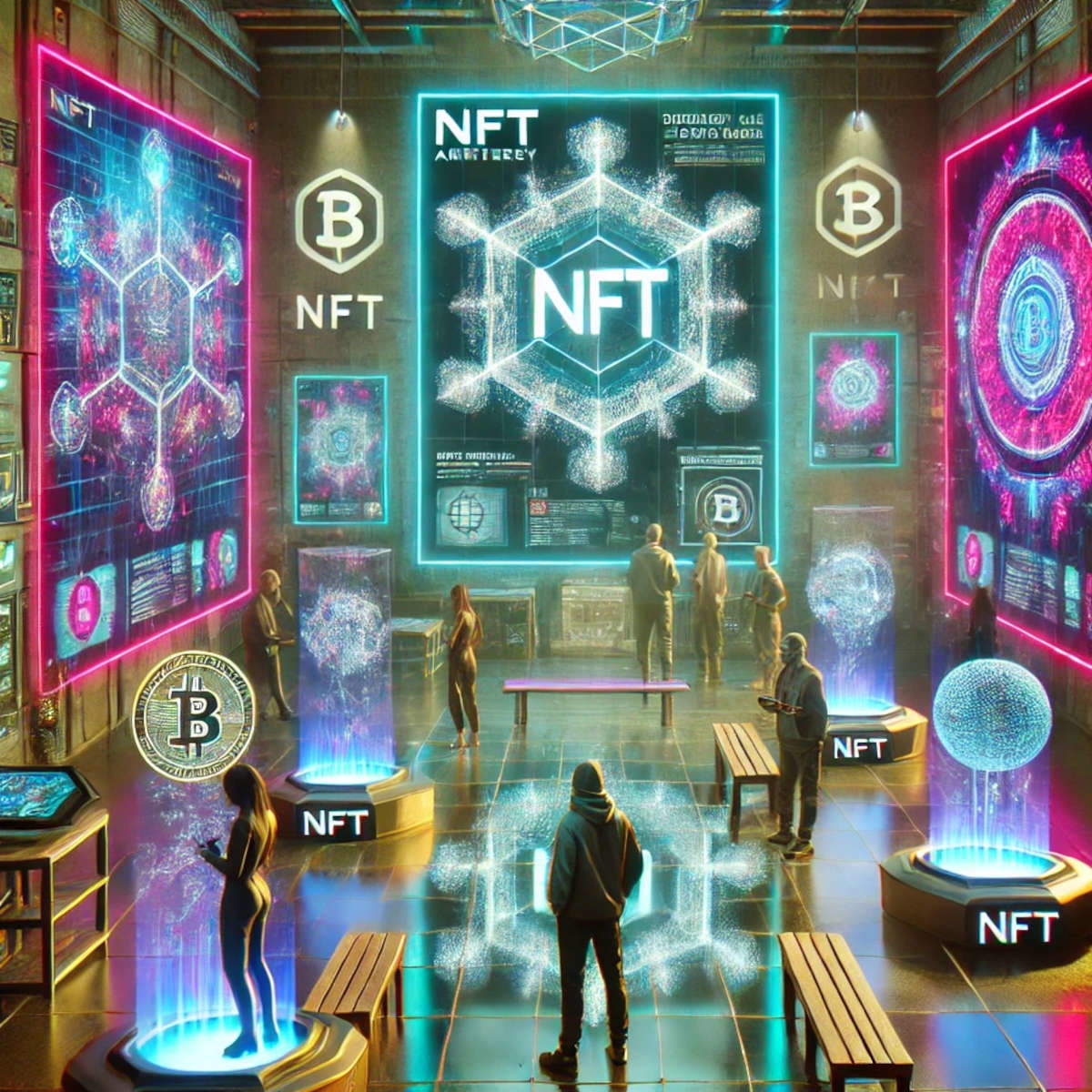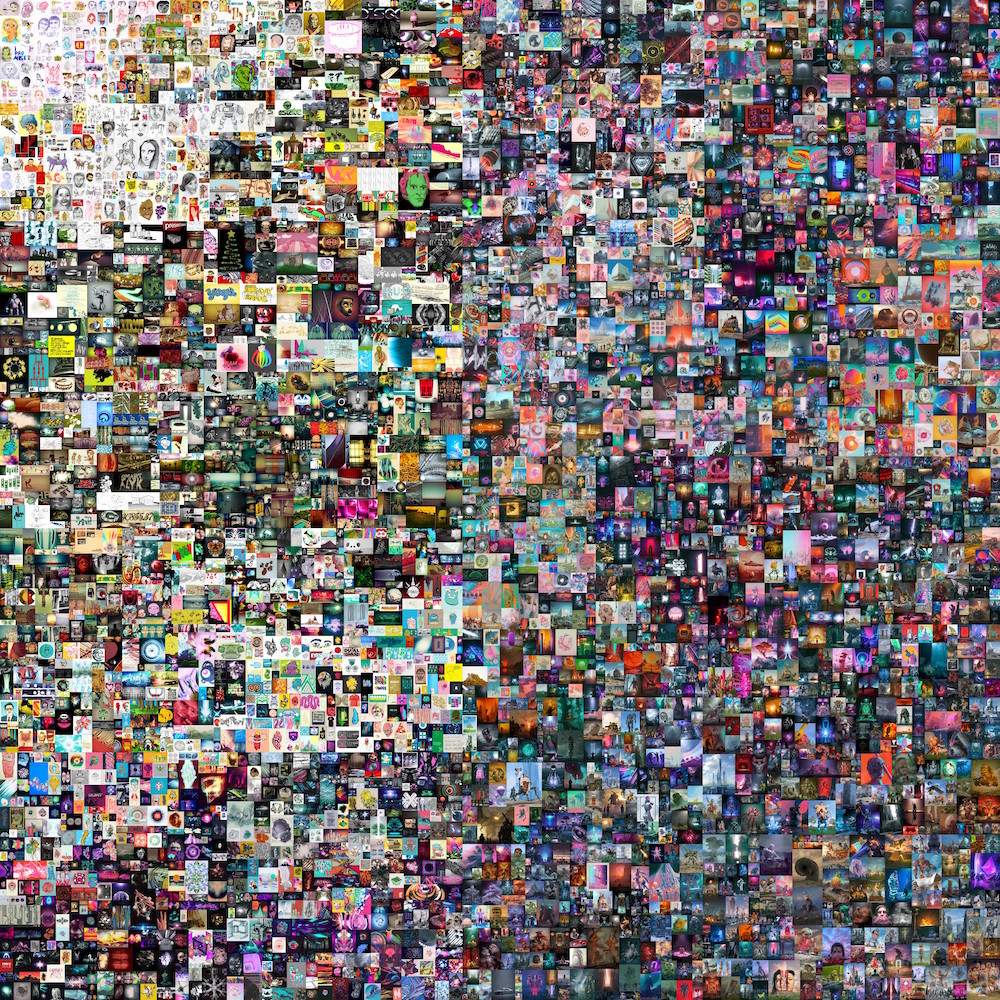In recent years, the Non-Fungible Token ( NFT ) phenomenon has rocked the art world like a bolt from the blue, bringing with it promises of revolution, democratization, and new creative frontiers. Today, however, we find ourselves reflecting on the rapid decline of this market, a decline that affects not only economic value but, more profoundly, cultural and symbolic trust in the medium. How did we move from digital utopia to disillusionment? And, most importantly, are NFTs really “art” or just a new language of the economy?
When NFTs began to gain attention in 2020-2021, they were accompanied by an almost messianic aura. Digital artists, often relegated to the margins of the traditional market, sawblockchain as a chance for emancipation. NFTs promised authenticity and uniqueness in the digital realm, where each copy is indistinguishable from the original. Not only that: smart contracts offered artists the chance to earn perpetual royalties, a revolutionary concept in a world where control over the work often gets out of hand after the first sale.
This utopian rhetoric was amplified by the complicity of platforms, investors, and celebrities, who helped turn NFTs into a mainstream phenomenon. NFT art, rather than an aesthetic movement, presented itself as an economic movement, a capitalist expansion into the territories of creativity. NFTs have always stood on the border between the worlds of art and finance, generating intense debates about their nature. Can they be considered art or are they simply investment tools disguised as creativity? The answer depends largely on their use.

At best, NFTs have been an innovative means for digital artists to express concepts related to technology, digital culture, and temporality. Some projects, such as those by artists like Pak or Refik Anadol, have pushed the boundaries of digital aesthetics, exploring the relationship between the audience and the immateriality of art. In these cases, artistic content is preeminent and blockchain technology becomes a means to preserve uniqueness and trace provenance. However, a large part of the NFT phenomenon has been dominated by speculation. Buyers and collectors seemed more interested in resale value than in the significance of the work itself. There was a widespread notion that possession of an NFT, rather than aesthetic or conceptual enjoyment, was the ultimate goal. This has led many to view NFTs as a financial product, a digital asset to be bought and sold rather than contemplated. This duality lays bare an existential tension for NFTs: they can exist as art only if their meaning transcends economic value, but their very structure (based on Blockchain and market) pushes them toward commodification.
Soon, the idealistic narrative cracked. The NFT market turned out to be a place of unbridled speculation, where value was no longer tied to quality or artistic innovation but to artificial scarcity and the promise of exorbitant economic returns. Works such as Beeple’s Everydays: The First 5000 Days, which sold for $69 million, marked not so much a victory for digital art as a spectacularization of the market.
This dynamic has raised profound questions: what happens to art when its value is measured in cryptocurrency instead of meaning? The promise of democratization turned into an elitist reality, where only wealthy collectors could afford meaningful works. Meanwhile, lesser-known artists remained invisible, crushed by an ecosystem dominated by marketing and sensationalism.
The collapse of the cryptocurrency market in 2022 had devastating repercussions for NFTs, exposing the fragility of the system. Platforms collapsed, valuations halved, and even the most enthusiastic collectors began to question the intrinsic value of these works. This was compounded by growing awareness of the environmental impact of blockchain proof-of-work, which fueled criticism of a technological system perceived as unsustainable and speculative.
But the real decline has not only been economic. NFTs lost their status as desirable objects, turning into symbols of a speculative bubble rather than a cultural vanguard. The same artists who had embraced the medium began to distance themselves, partly disillusioned by market dynamics, partly in search of new, less compromised forms of expression.
The NFT story offers us an opportunity to reflect on the relationship between art and technology, but also on the role of the market in defining cultural value. It is too early to declare the death of NFTs: although they have lost their centrality, there continue to be active niches where the medium is explored with more critical and conscious approaches.


Their future as art, however, will depend on artists’ ability to break free from speculative dynamics and bring attention back to the meaning and cultural impact of the works. NFTs can be a powerful medium for exploring the relationship between virtual and real, between identity and technology. But as long as they are perceived as investments before works, they risk losing all artistic legitimacy.
The NFT phenomenon, in its rise and decline, has been a mirror of our times. It has embodied our technological hopes, our mercantile obsessions, and our ecological anxieties. Perhaps more than a failure, NFT has been a collective experiment, a laboratory in which we tested the boundaries between real and virtual, between value and meaning.
In the uncertainty of this parable, one question remains: what makes a work a work of art? NFTs, rather than answering, have forced us to confront this question, revealing the contradictions of a world where cultural value and economic value are in constant conflict. Not everything that can be sold is art, and not everything that is art can be sold. But in this space of tension, art (and perhaps NFTs) can still find its way.
Warning: the translation into English of the original Italian article was created using automatic tools. We undertake to review all articles, but we do not guarantee the total absence of inaccuracies in the translation due to the program. You can find the original by clicking on the ITA button. If you find any mistake,please contact us.